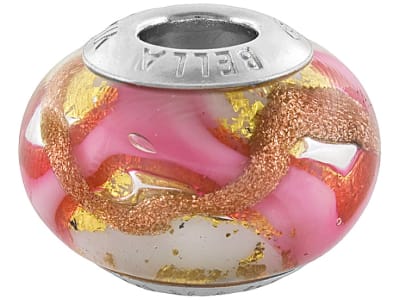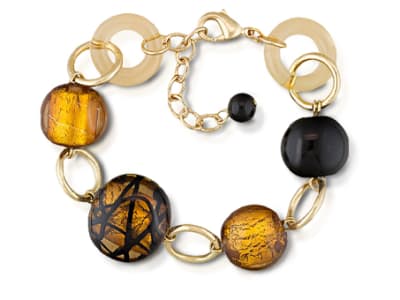The Italian glass industry dates to the 8th century. In 1291, Venetian glassmakers were ordered to move to the island of Murano to prevent fire from destroying the wooden buildings of Venice. Glass artisans handed down their knowledge and skills through the generations. The Murano artists are forever innovating, and they are known for their use of color and intricate glass decorations.
General Information
Common Name
Murano Glass
Species
Glass
Transparency
Opaque-Transparent
Dispersion
Strength: Moderate if Contains Lead Value: 0.009
Refractive Index
1.460-1.800
Optic Character
NA
Optic Sign
NA
Polariscope Reaction
Anomalous Double Refraction (ADR), Singly Refractive (SR)
CCF Reaction
Red if colored by cobalt
Pleochroism
None
Hardness
4.5-6.5
Streak
None
Toughness
Poor
Inclusions
Gas bubbles, separations between glass rods, swirls of color
Luster
Vitreous
Fracture
None
Cleavage
Conchoidal, Granular, Splintery
Crystal System
NA
Murano Glass Colors
-
 Bi-color
Bi-color -
 Black
Black -
 Blue
Blue -
 Brown
Brown -
 Colorless
Colorless -
 Gray
Gray -
 Green
Green -
 Multi-color
Multi-color -
 Orange
Orange -
 Pink
Pink -
 Purple
Purple -
 Red
Red -
 White
White -
 Yellow
Yellow
Alternate Names
Millefiori, Murrine, Sommerso
Countries of Origin
Unknown; Italy
Care
Normal care

